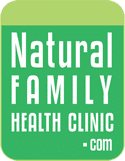Thanks to a concerted push to inform the general public regarding breast health most women are aware of the generally accepted guidelines of performing regular self breast exams, receiving physical exams from your doctor as well as appropriate diagnostic imaging at the recommended intervals. Speak with your doctor if you are unclear of what steps you should be taking toward prevention.
The incidence of breast cancer here in the northwest is higher than many parts of the country which leave us asking – why? To be plain, we simply do not know with certainty the answer(s) to this question. Below I will share with you some ideas that you may not be as familiar with that could be equally important in promoting and maintaining breast health.
Know the (health) factors
It is important to know what factors influence the development of a particular health condition. Traditionally, risk factors are identified by taking groups of people that have a similar health condition – and then looking back to see what they have in common that might have contributed to the development of that disease. In my opinion, doing the same thing with groups that do not develop a given health condition can be just as valuable. When it comes to breast cancer, there is some exciting information that sheds light on what these health factors might be.
Be proactive
In addition to making sure you are following the generally accepted guidelines for breast health, there is so much that you can do to improve your health today and protect against disease tomorrow. Building and promoting health is something that should be a part of your daily program. For simple strategies that you can begin incorporating into your daily life see the Health living strategies handout.
Eat whole foods (mostly plants)
Some of the lowest cancer rates are found in populations that eat a diet that consists of mostly plant foods (fruits & vegetables), unprocessed whole grains and little animal protein – aside from fish. One of the greatest things you can do for your own health and for those around you is to shift your food choices toward whole food. Start with simple things, like eating less junk food or drinking less soda. Then, add something healthy like a fresh fruit and vegetable smoothie in the morning. For recipe ideas go to the Recipes page.
Blood sugar balance
Research indicates that women with elevated insulin levels are at increased risk of developing breast cancer. Maintaining balanced blood sugar will keep insulin levels at a healthy level. This is most effectively achieved through proper eating and regular physical activity. The food choices we make determine the level of sugar that enters our bloodstream – while consistent physical activity improves our cells ability to respond to insulin. Further, consuming a diet rich in whole foods; leafy green vegetables and whole grains will provide additional nutrients and fiber essential in maintaining healthy insulin levels as well as improving health on a number of parameters.
Vitamin D
Vitamin D is one of the most versatile and powerful nutrients produced by the body. However, we need sunlight to stimulate its production. This presents a particular challenge during the winter months and at higher latitudes such as here in the northwest. Supplementing higher doses of vitamin D can be a great idea to boost immune function and potentially protect against the development of cancer. As a side benefit, vitamin D is also involved in blood sugar regulation, bone health and quenching inflammation in the body.


